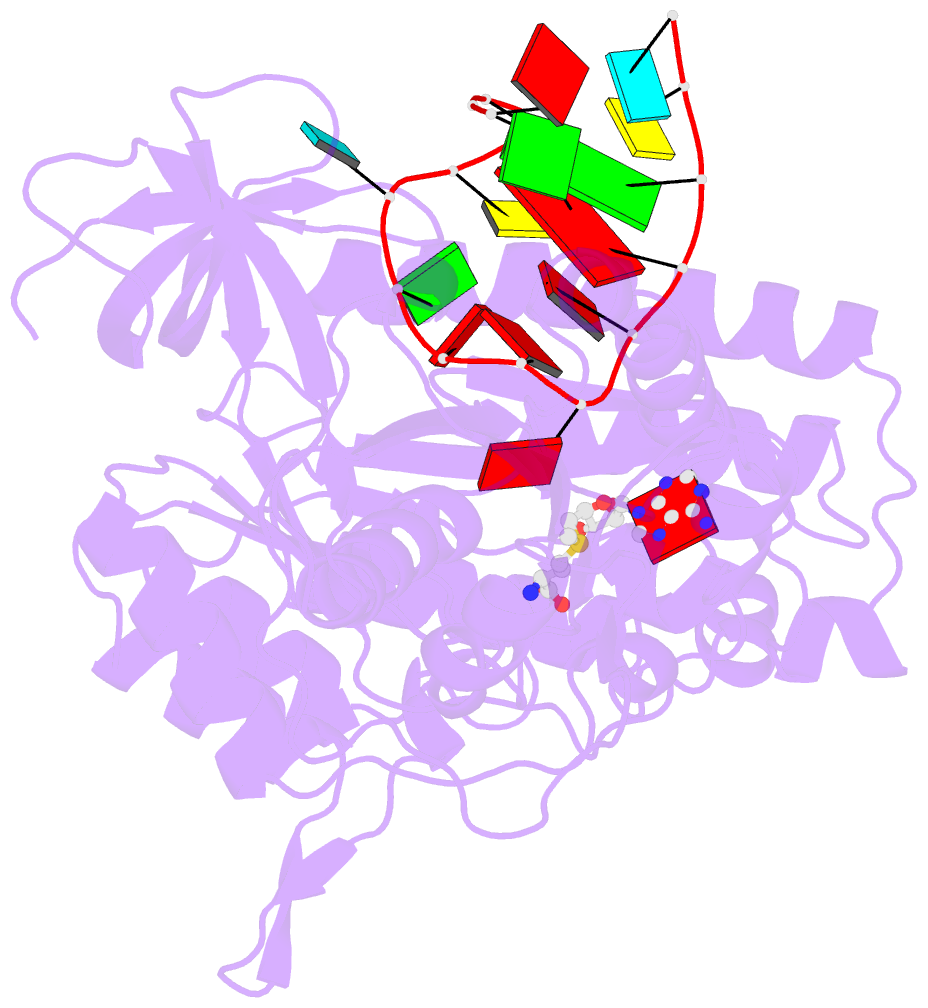Summary information and primary citation
- PDB-id
- 7mjv; SNAP-derived features in text and JSON formats;
DNAproDB
- Class
- transferase-RNA
- Method
- X-ray (2.24 Å)
- Summary
- Miab in the complex with s-adenosylmethionine and RNA
- Reference
- Esakova OA, Grove TL, Yennawar NH, Arcinas AJ, Wang B, Krebs C, Almo SC, Booker SJ (2021): "Structural basis for tRNA methylthiolation by the radical SAM enzyme MiaB." Nature, 597, 566-570. doi: 10.1038/s41586-021-03904-6.
- Abstract
- Numerous post-transcriptional modifications of transfer RNAs have vital roles in translation. The 2-methylthio-N6-isopentenyladenosine (ms2i6A) modification occurs at position 37 (A37) in transfer RNAs that contain adenine in position 36 of the anticodon, and serves to promote efficient A:U codon-anticodon base-pairing and to prevent unintended base pairing by near cognates, thus enhancing translational fidelity1-4. The ms2i6A modification is installed onto isopentenyladenosine (i6A) by MiaB, a radical S-adenosylmethionine (SAM) methylthiotransferase. As a radical SAM protein, MiaB contains one [Fe4S4]RS cluster used in the reductive cleavage of SAM to form a 5'-deoxyadenosyl 5'-radical, which is responsible for removing the C2 hydrogen of the substrate5. MiaB also contains an auxiliary [Fe4S4]aux cluster, which has been implicated6-9 in sulfur transfer to C2 of i6A37. How this transfer takes place is largely unknown. Here we present several structures of MiaB from Bacteroides uniformis. These structures are consistent with a two-step mechanism, in which one molecule of SAM is first used to methylate a bridging µ-sulfido ion of the auxiliary cluster. In the second step, a second SAM molecule is cleaved to a 5'-deoxyadenosyl 5'-radical, which abstracts the C2 hydrogen of the substrate but only after C2 has undergone rehybridization from sp2 to sp3. This work advances our understanding of how enzymes functionalize inert C-H bonds with sulfur.





